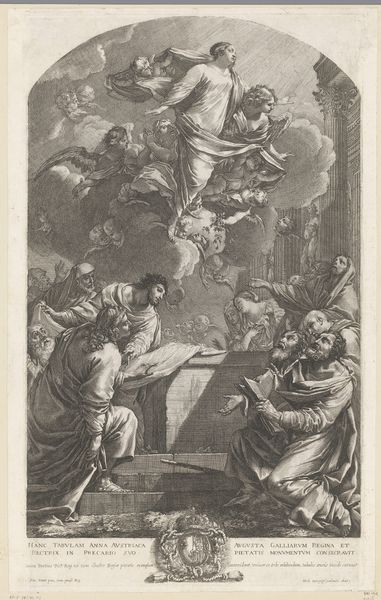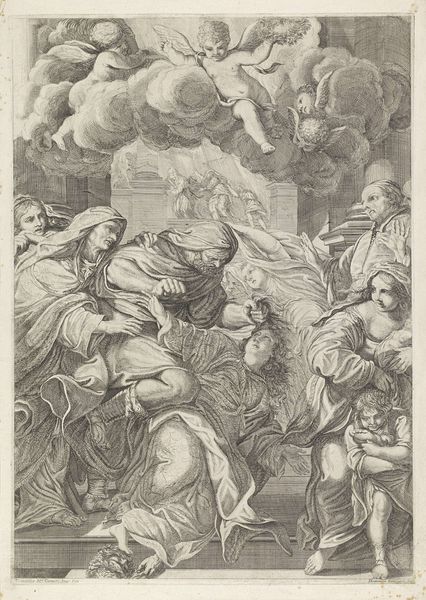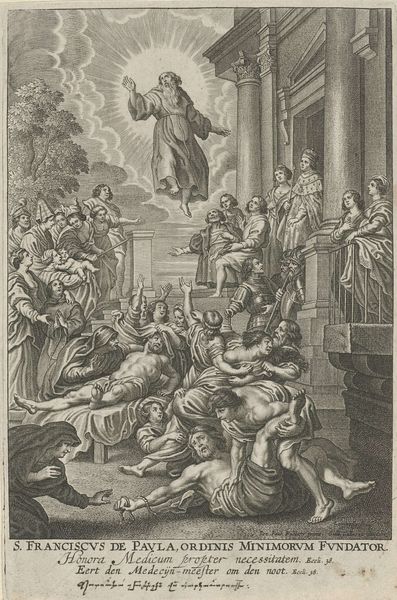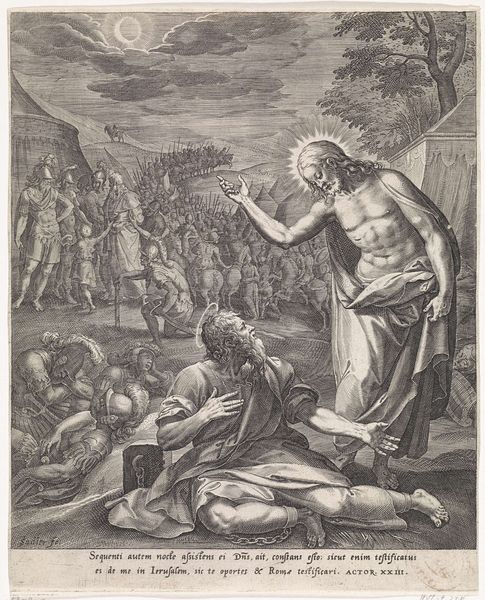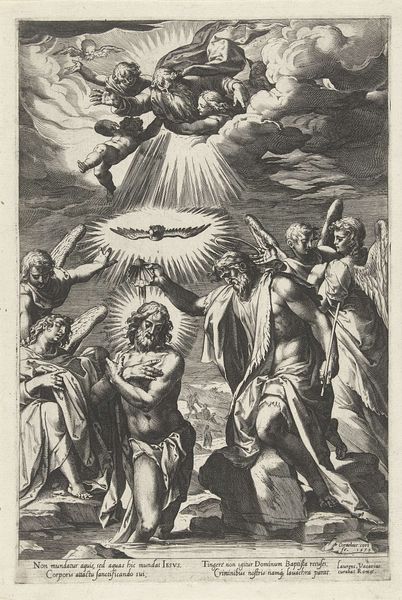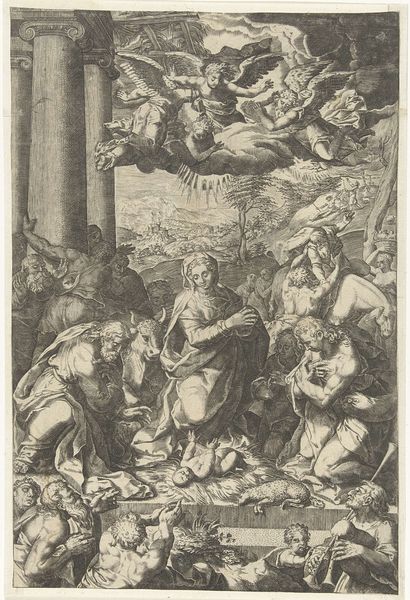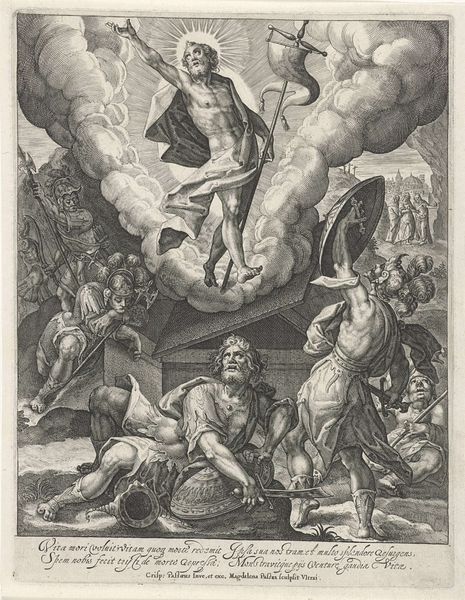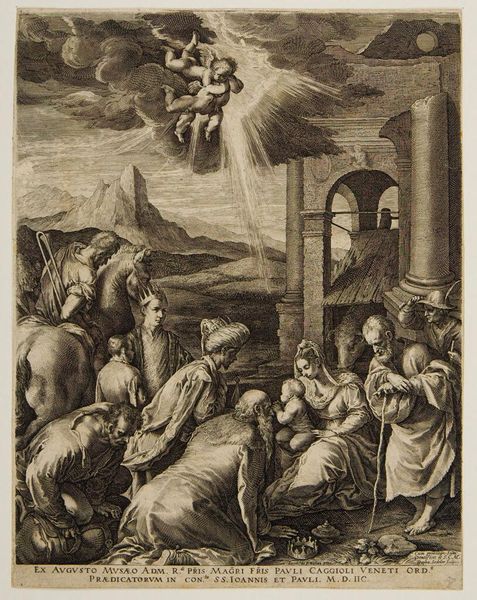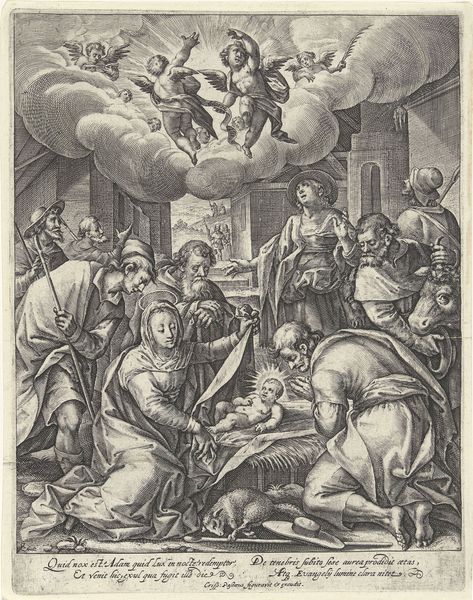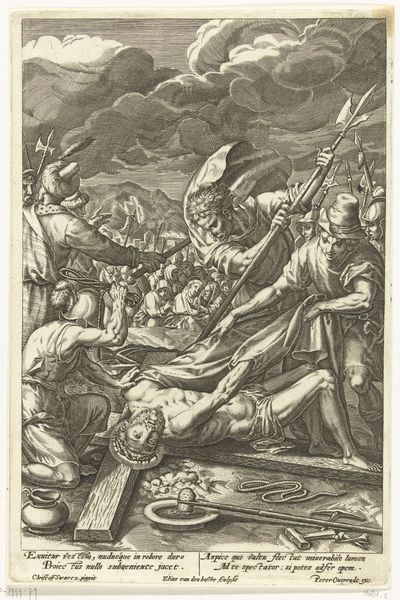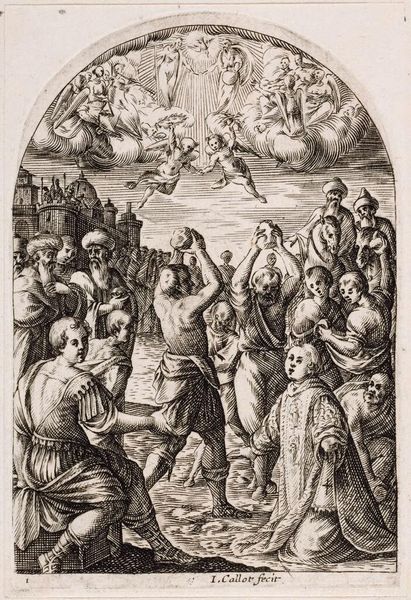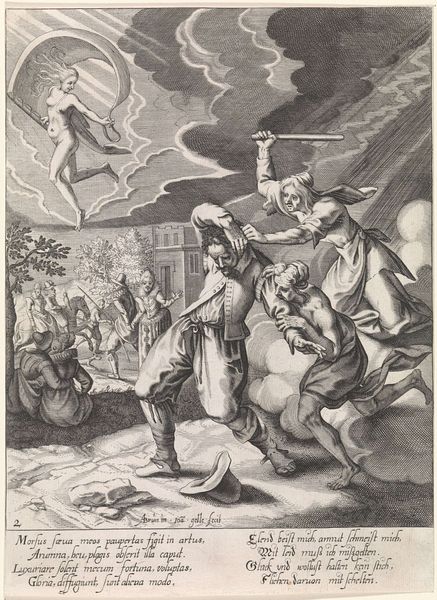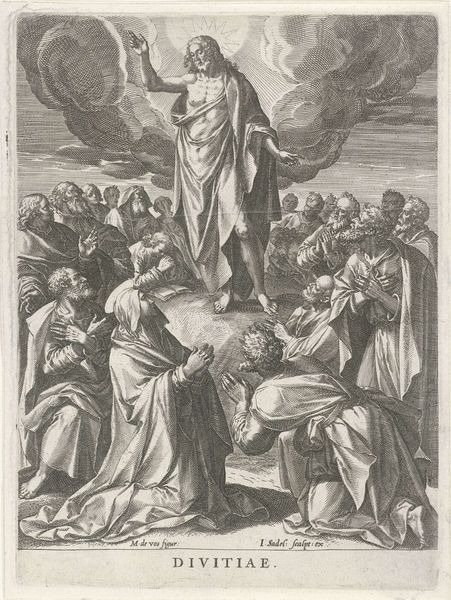
Dimensions: height 296 mm, width 208 mm
Copyright: Rijks Museum: Open Domain
Curator: Johann Sadeler I created this engraving, "The Decapitation of Paul," around 1580. It's currently housed in the Rijksmuseum. Editor: Well, my immediate reaction is that it's incredibly visceral. The scene is dominated by the brutal act itself. You can almost feel the weight of the executioner's arm as he wields that sword. The composition really emphasizes the corporeality of death. Curator: Precisely. The engraving depicts the martyrdom of Saint Paul, and it's crucial to understand the political and religious climate of the time. Sadeler was working during a period of intense religious conflict, particularly in the wake of the Reformation. Prints like this weren’t merely illustrations; they were potent visual arguments intended to bolster Catholic identity in the face of Protestant challenges. The emphasis on Paul’s suffering underscores a narrative of faithfulness and sacrifice amidst persecution. Editor: Yes, and the means of production—engraving—contributes to this feeling. The very act of incising those lines onto the metal plate to create this scene reflects the kind of laborious, almost brutal act the print depicts. Look at the rendering of the body—the musculature and exposed neck speak volumes about the vulnerability of the physical form in the face of power. This makes you think about how the artwork’s making underscores the human cost implicit within narratives of power and devotion. Curator: I also notice how Saint Paul is surrounded by various onlookers, their expressions ranging from grief to apparent indifference. It prompts reflection on how power is enacted and passively accepted within communities. Who benefits from this spectacle of violence? Whose voices are silenced or complicit? These dynamics extend beyond the purely religious; they have implications for thinking about oppression and resistance across contexts. Editor: The material qualities really ground this within social dynamics. We must note how engravings were circulated: they became commodities. This martyrdom, as such, moves away from religious ceremony as devotional object, becoming enmeshed within an economic system that is far away from its point of religious origin. Curator: Ultimately, Sadeler’s engraving makes visible questions about authority, suffering, and belief—themes that still echo loudly in contemporary society. It calls us to question how representations of violence shape collective consciousness, challenging whose stories are memorialized and how. Editor: Exactly, seeing this today demands scrutiny of the media forms in which political messages spread, alongside how artists have engaged, for centuries, in cultural messaging, reflecting the role of materials and social situations.
Comments
No comments
Be the first to comment and join the conversation on the ultimate creative platform.

